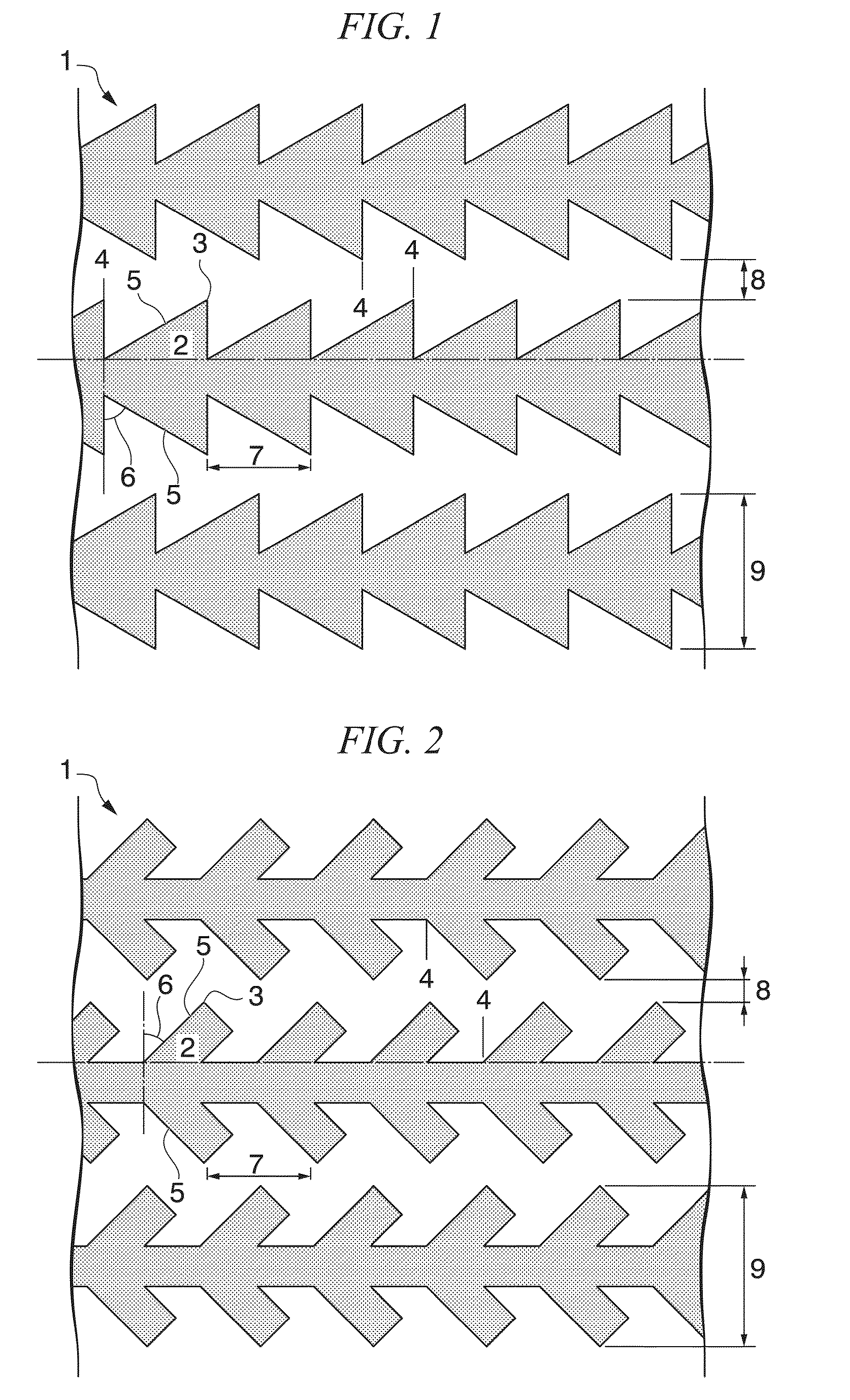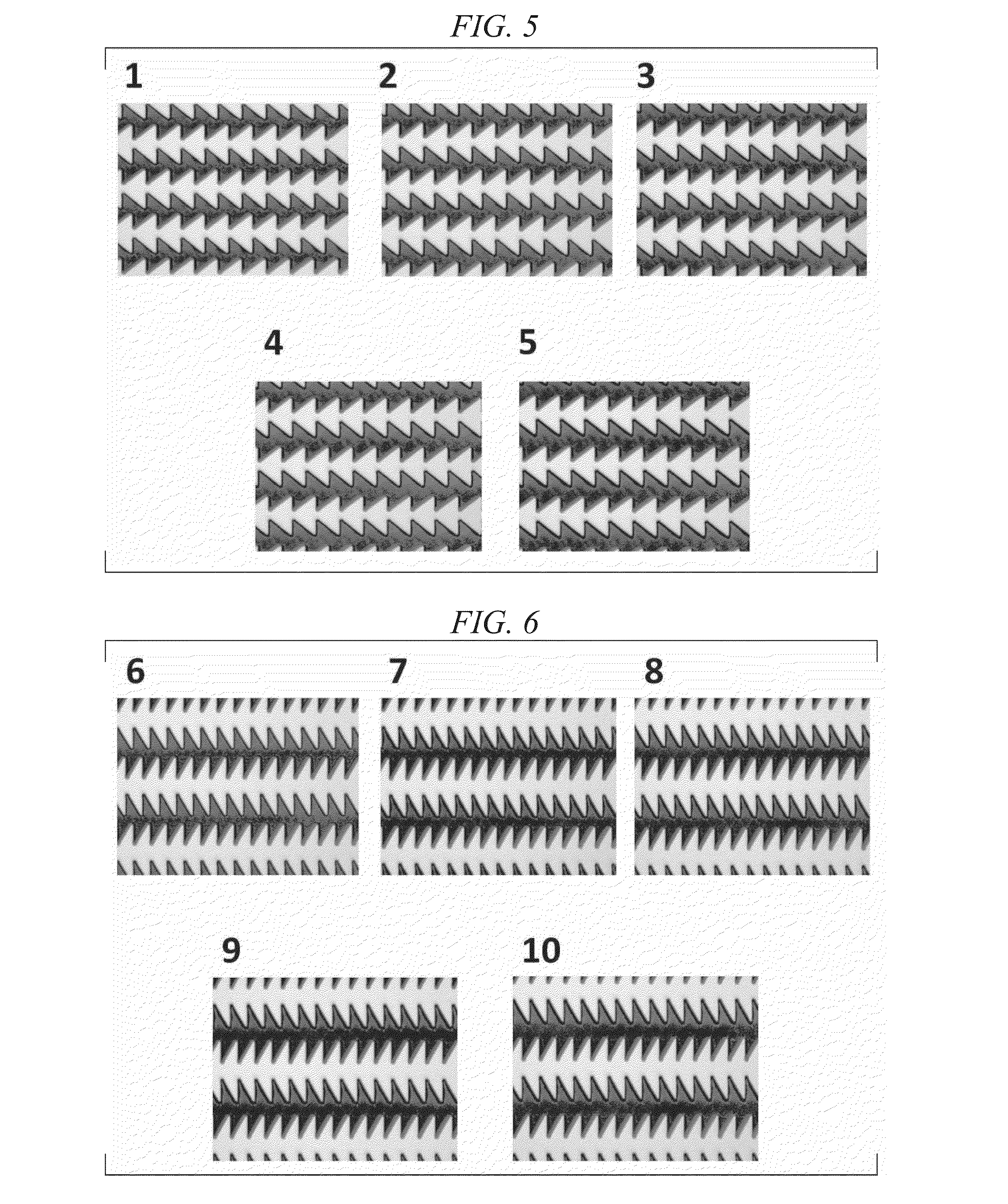Substrate for controlling movement direction of animal cells, and cell identification method and cell separation method using the same
a technology of animal cells and substrates, which is applied in the field of substrates for controlling the movement direction of animal cells, and cell identification methods and cell separation methods using the same. it can solve the disadvantage of chemotaxis
- Summary
- Abstract
- Description
- Claims
- Application Information
AI Technical Summary
Benefits of technology
Problems solved by technology
Method used
Image
Examples
example 1
(1) Manufacture of a Substrate Having a Three-Dimensional Pattern
[0074]With respect to areas of quartz photomasks (commercially available from MITANI MICRONICS Co., Ltd.) having 25 areas (squares of 1 mm), photomasks that have a basic structure shown in FIG. 4 and have 15 types of patterns 1 to 15 in which portion dimensions and angles indicated by a to h are different were prepared.
[0075]On a silicon substrate (10 mm×10 mm) having a thermally oxidized film of 900 nm, hexamethyldisilazane (MMDS, commercially available from TOKYO OHKA KOGYO Co., Ltd.) and a resist composition (OFPR-5000LB, commercially available from TOKYO OHKA KOGYO Co., Ltd.) were spin-coated (1000 rpm for 5 seconds to 4000 rpm for 45 seconds). After a prebake was performed (110° C. for 2 minutes), the previously prepared quartz photomasks and the silicon substrate coated with a resist film were inserted into an exposure device (MA-20, commercially available from MIKASA Co., Ltd.) and exposed for 1.5 seconds.
[0076]...
example 2
[0081](1) PKH26 Staining of NIH3T3 cells
[0082]The substrates manufactured in Example 1(2) were immersed at a bottom of the 35 mm cell culture dish to which the DMEM medium was added and degassed at −0.09 Mpa for one minute while lightly shaking, and after the culture medium was replaced, immersed in the culture medium and left for 12 hours without change. The NIH3T3 cells were seeded at 1×104 cells / cm2 in the dish containing the substrate having a three-dimensional pattern, cultured for 2 hours, and then immersed in PKH26 (500-fold dilution, commercially available from Sigma-Aldrich Co. LLC) for 4 minutes at room temperature. A reaction of PKH26 was stopped by FBS, and then washing was performed with the culture medium. A time from when the NIH3T3 cells were stained with PKH26 until the washing operation was completed was about 0.25 hours. Such procedures were modified and used with reference to a staining protocol of PKH26.
[0083]The substrates to which the NIH3T3 cells stained with...
PUM
| Property | Measurement | Unit |
|---|---|---|
| height | aaaaa | aaaaa |
| distance | aaaaa | aaaaa |
| height | aaaaa | aaaaa |
Abstract
Description
Claims
Application Information
 Login to View More
Login to View More - R&D
- Intellectual Property
- Life Sciences
- Materials
- Tech Scout
- Unparalleled Data Quality
- Higher Quality Content
- 60% Fewer Hallucinations
Browse by: Latest US Patents, China's latest patents, Technical Efficacy Thesaurus, Application Domain, Technology Topic, Popular Technical Reports.
© 2025 PatSnap. All rights reserved.Legal|Privacy policy|Modern Slavery Act Transparency Statement|Sitemap|About US| Contact US: help@patsnap.com



